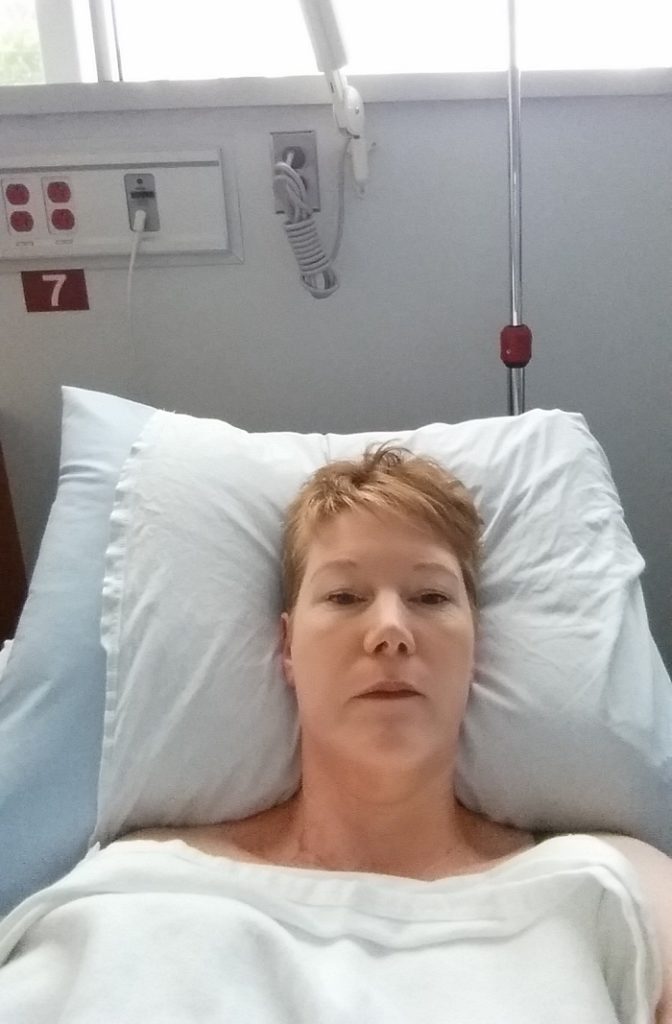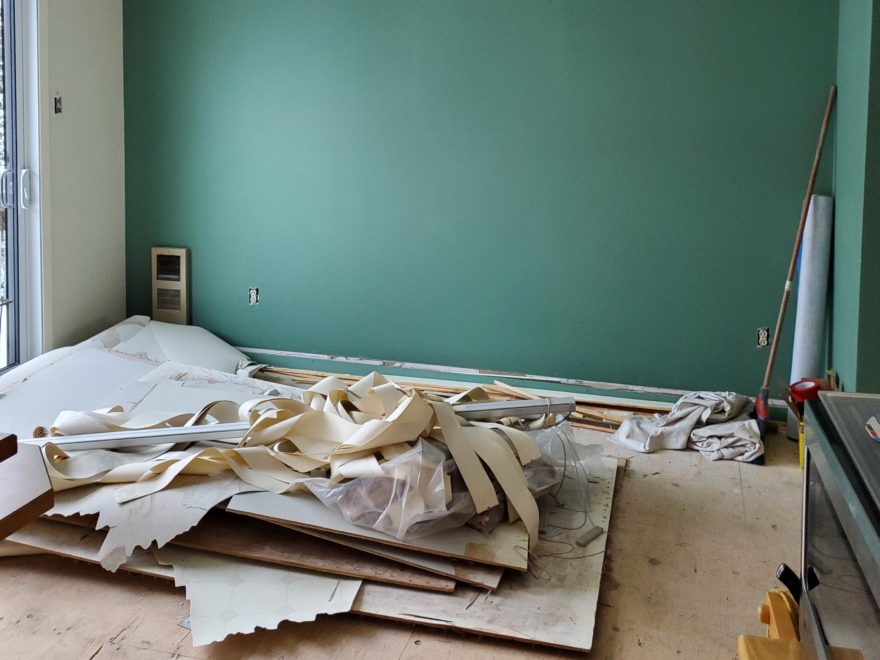It’s almost spring here in the northern hemisphere, and I’m truly looking forward to seeing all the rest of our snow melt away. This winter seems to have lasted for much longer than usual, although that’s probably – at least in part – a reaction to continuing sad news over the past months.
Do you find yourself also longing for news reports of happy stories, when you turn on your television, phone, or other device? For peace declarations, for truces, for news of people who were lost in the wilderness – then found unscathed? Stories with happy endings, situations that come to a conclusion…
Well, on a personal note, I do have some good news. I’d hesitated about sharing it, given that so many people in Ukraine – and elsewhere – are losing or being forced to flee their homes… but then thought that maybe someone would see this as a ‘good news’ story. So here goes.
Back in 2016, my husband and I had saved enough money to have the open kitchen and dining room of our home renovated. It was built in 1991, over 30 years ago, which seems impossible to me. How could it already have been three decades since the 1990s?
We bought this place in 1996, from the original owners, and slowly had its unfinished basement completed. Then we had a new roof installed, later more energy-efficient windows throughout, then a refresh of the bathroom to replace yellowing used-to-white cabinets, and several other projects.
The kitchen featured cream-coloured melamine cabinets, with an early 1990s-style strip of oak trim along the edge of each door and drawer. Over the years, we’d scrubbed the melamine so often that it was starting to discolour. My pet peeve, though, was that countertop was also a pale cream colour – of melamine – which stains very easily.
If you happen to drop a blueberry, a cherry, or a piece of chopped beet, or to spill a bit of red wine, it causes a stain on the counter. We’ve cleaned stains off it so many times, trying so many products (including baking soda!), that the counter appeared spotted. It was long past time for it to go, back in 2016.
We were ready to go with the full renovation of our kitchen and dining room, and had planned to hire a contractor that spring. Then, in early March, I slipped on a patch of ice and broke my right arm. A snapped radius, called a Colles’ fracture, which looked set to heal so well that I wouldn’t even need surgery. There was a surprise in store, though. That Colles’ fracture triggered a rare disease; Complex Regional Pain Syndrome (CRPS), sometimes still also known by its old name Reflex Sympathetic Dystrophy (RSD).
It took three months for me to finally get that diagnosis, while I endured horrific and unexplained pain. I’d just started a new job, a newly-created position that was so perfect for me that I called it my dream job. There’s never a good time to be living through what seems like a medical mystery movie, and intense pain, but the start of a new job definitely isn’t ideal!
Any thoughts of renovations were pushed from our minds, by my repeated hospital visits. Within an hour of my diagnosis that summer, by an in-hospital specialist, I was being wheeled into the day surgery OR (operating room)! That was the first of eight day-surgeries that I’d undergo at that hospital.




I was also advised to begin an intensive regimen of physical therapy, three times a week. During each session, my physiotherapist would try to ‘break’ the adhesions that were forming in my wrist joint and in each knuckle or joint of my right hand. These adhesions are kind of like scar tissue, and block the movement of each of those joints. If left untreated, the joints can fuse, and become completely stiff.
There was also a custom-made dynamic splint that I’d have to wear for several hours each day, which I still use today. It pulls my wrist and each finger upwards, all independently of each other, to hopefully prevent complete fusion of those joints.

There were also, I was told, some long-term risks of my CRPS. If I chose not to undergo all that physical therapy, which was recommended for other reasons than only the impact of CRPS on my joints, there was a possibility that my right hand and lower arm could eventually require amputation; from the elbow.
The thumb of my right hand, for some inexplicable reason, has never been affected by my CRPS. There was no way, I told myself early on in this rare disease patient journey, that I’d want to lose that extremely-useful opposable thumb. My husband agreed that we’d do everything possible to prevent the eventual amputation of my arm.
Do you remember earlier on, when I said that my husband and I had saved some money back in 2016, for our kitchen renovation? Well, we spent it all on my physical therapy. Although Canadian provinces and territories have publicly-funded health insurance, physiotherapy isn’t covered here in Québec – except for the first few sessions in-hospital after a major surgery.
Our combined group insurance, for physical therapy, combined with all other non-medical treatments, had an annual cap that covered only a few weeks of intensive physiotherapy. At two or three sessions a week, for almost three years, this was very expensive. We ended up spending even more than what we’d saved for our kitchen renovation, but we did save my arm.
It’s disturbing to me, with my background in bioethics – called biomedical ethics in some areas – that this medically-recommended treatment for a rare disease was not covered by our governmental health insurance. This means that, by default, this treatment is simply out of reach for many patients with CRPS. That’s not right. We have what’s often called ‘universal’ health insurance, but it’s not universal – not unless an individual can pay for all the therapies that aren’t covered.
Other examples abound, just for CRPS. This autoimmune and neuro-inflammatory condition causes a long and often bizarre list of symptoms, the most common of which is severe chronic pain. Several different and distinct types of chronic or persistent pain, in fact.
There’s the joint pain, including from the adhesions described earlier. Then there’s the neuropathic or nerve pain, like what people feel from shingles. There’s also usually the feeling that my hand and arm are on fire, or have frostbite – or very strangely – both sensations at the same time. My hand and arm will sometimes change colour and begin to swell, for no apparent reason, which causes a completely different type of pain.
Many of the other therapies recommended to help patients deal with – to live with – incurable chronic pain conditions, like CRPS, are also out-of-pocket expenses. Massage therapy, occupational therapy, pain-specific aqua- or exercise-therapies, art therapy, many psychological therapies, and so much more remain outside the realm of services covered under our public health insurance.
Again, this isn’t right. My bioethics training stressed the point that health insurance across Canada was meant to prevent catastrophic financial impacts of health situations throughout a person’s life – childbirth, injury, illness, etc. – on an individual or a family. Yet medically-recommended and scientifically-validated treatments for chronic pain conditions remain outside the umbrella of our health insurance, even though these therapies are often required for years.
Getting back to my story for today, after that little foray into bioethics, I was going to tell a ‘good news’ story… I’m getting there, I promise!
After all those out-patient procedures in the day-surgery OR, and countless attempts at treating my CRPS with different medications, I’d hit the limits of what our community hospital could handle. In October 2016, my care was transferred to a much larger hospital – part of a huge university-hospital network – in Montréal’s downtown or city-centre area. The care there has been fantastic, and I feel truly blessed to now be treated at a multidisciplinary pain management unit.
Although being diagnosed with a painful rare disease put all of our plans on hold, my husband and I kept right on trying to save money – to someday renovate that beige melamine kitchen. In some ways, the public health restrictions over the past two-plus years helped us save – simply because there was nothing to do. We skipped take-out food and made our own meals for health reasons, we went for walks in the forest near our home for ‘entertainment’, and we didn’t need any new clothes because we were staying home…
So our long-awaited home renovation has just started! Our kitchen will be brought down to the studs, our open dining room will be refreshed, and all the old parquetry flooring on the main level of our home will be changed – except the bathroom tile.
Some light fixtures will be changed, the main floor will be repainted, and our electric baseboard heating units will be replaced with convection-heating units. (In Québec our electricity is provided through ‘green’ hydroelectric dams, rather than by burning coal or gas, so it’s viewed as being environmentally friendly.)
During all these renovations on the main floor, we’ll be living in the basement of our two-level home – along with all the furniture from upstairs, boxes of kitchen supplies, clothing from closets that are being painted, and … you get the idea!
I’ve been telling my dad that our basement looks like a cross between two television shows; Tiny Homes and Hoarders ,-) But it’s not a complaint! We are both thrilled that this renovation is finally underway. We were ready for this back in 2016, so we’ve been looking forward to these renovations for over five years.
Our temporary living space is in one corner of the basement, beside the patio doors to our backyard. We have two comfy old wicker chairs, a tiny end table, an isty-bitsy desk at which my husband can work-from-home, and a mattress on the floor. We have a wooden kitchen cart on wheels, with a microwave, coffee-maker, and kettle. Another rolling cart, usually for craft supplies, houses a toaster along with camping dishes.
It’s much more luxurious than the tent-camping we used to do, and we even have a powder room (half-bath) in our basement… showers will be taken upstairs, very early in the morning, before the reno crew arrives at 0700!
With our home in disarray, I won’t have anywhere to write for the next six to eight week. I’ll try to move my plein-air (outdoor) easel around the house, keeping out of the way as different areas are being renovated, to do my watercolour painting.
But it’s harder for me to write when there’s a lot of noise or activity, because my CRPS has caused a mild cognitive impairment… It’s difficult for me to focus on something – to concentrate – now, at the best of times, so I don’t expect to be blogging much between now and the end of April.
While we can’t wait to see our new and improved home, we can’t help but think of all the people who are losing their homes to an unprovoked invasion in Ukraine. So we just made an extra donation to Doctors Without Borders (Médecins sans frontières), for five times our usual annual donation – on top of the donation we’d already made. That organization has been assisting refugees of war and invasions for decades, and has very sadly developed an expertise in these types of humanitarian crises.
As always, thanks so much for stopping by. Stay safe, keep well, and look after yourself – as well as your loved ones. We never know what the day will bring, so tell the important people in your life that you love them – often. And show some love to yourself, as well. Feel free to reach out over on Instagram or Twitter; I adore hearing from you. But I’ve had to disable the Comments feature here, as it’s too much for my cognitive impairment to manage.

